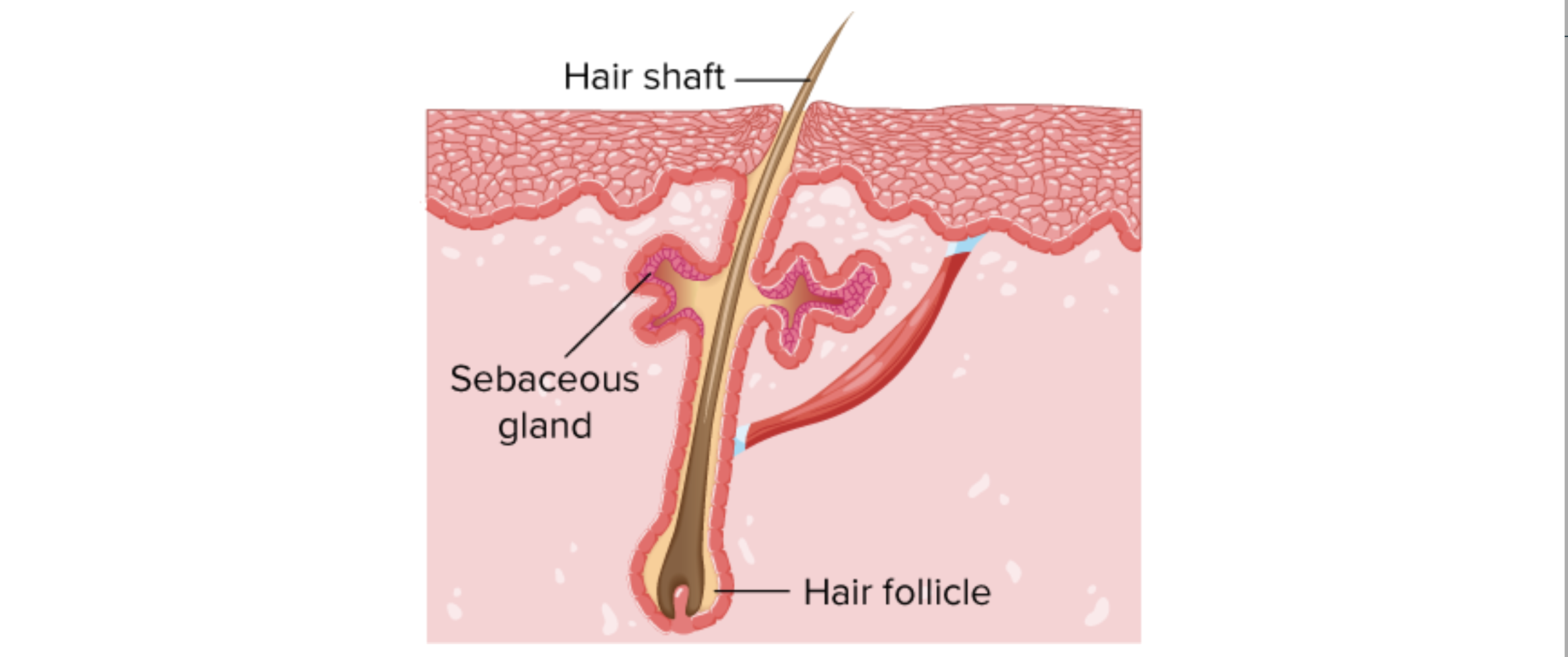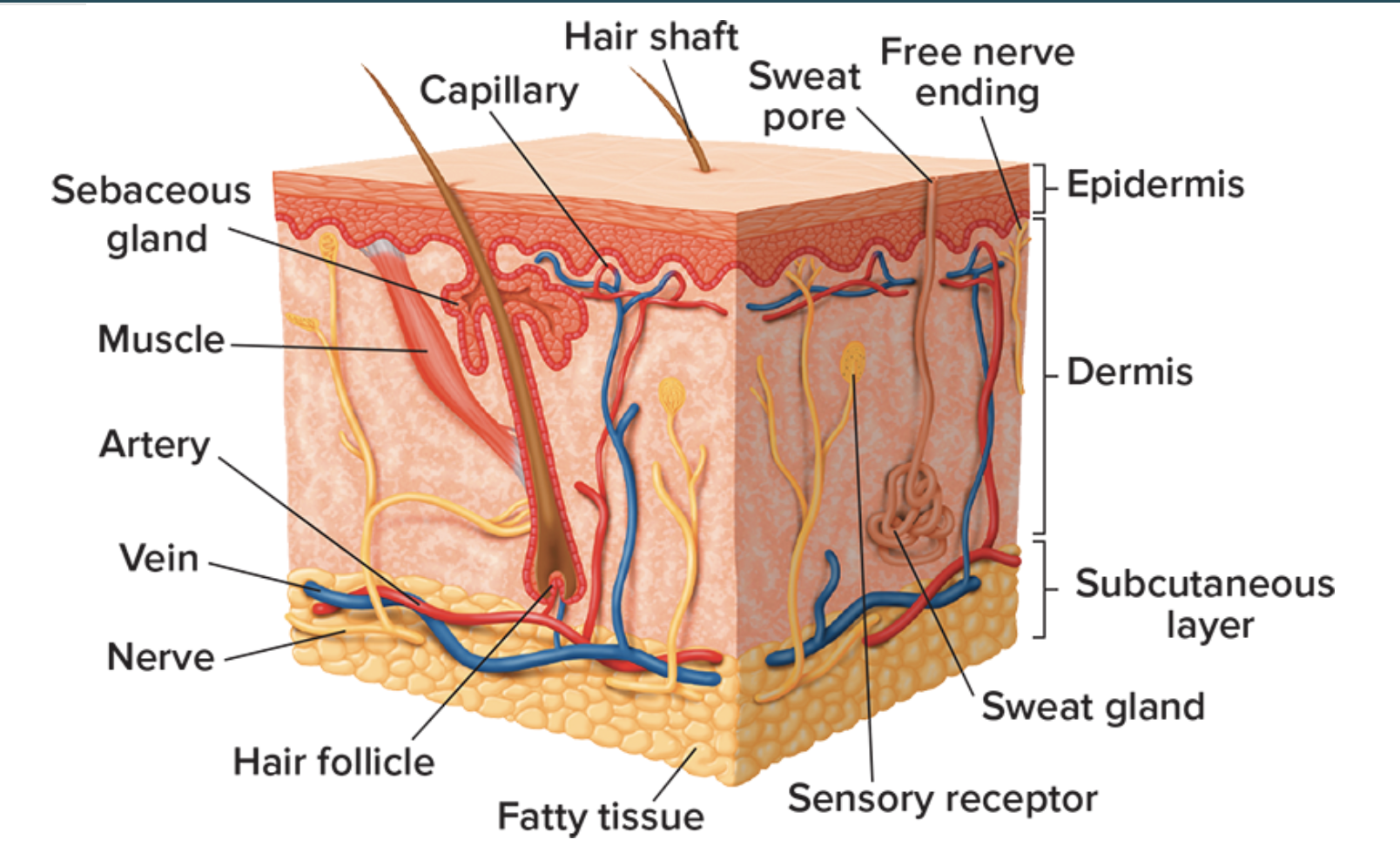Overarching function
The integumentary system is an organ system that covers the entire body. It is made up of the epidermis, dermis, and subcutaneous layer. The main functions of the integumentary system are to regulate body temperature, protect from infection and radiation, perceive senses, and produce vitamin.
Basic structures and functions
Macroscopic structures
-
Epidermis → barrier to infections
The epidermis serves as a barrier to infections. Veins and sensory receptors are at the dermis below the epidermis. The epidermis keep germs from entering the body through the veins.
-
Hair → conservation of body heat
Hair on our body provides a “cover” for mammals to insulate against cold by conserving body heat. The sebaceous gland beside it excretes oil to protect against friction.

Microscopic structures
-
Sweat glands → to regulate body heat
Sweat glands produce sweat that comes out from sweat pores, which is located on the epidermis layer. This happens when the body temperature is too high. The production of sweat brings down body temperature.
-
Sensory receptors → to feel
Sensory receptors are the yellow circular objects in the diagram below. They perceive touch and transmit messages to the brain through nerves, making us feel.

Connection to other systems
The integumentary works with the nervous system. The sensory receptors in the dermis are connected via nerves to the central nervous system, and sends signals to the brain. If the body temperature is too high, the brain might send signals to the sweat glands in the integumentary system to start producing sweat, thus lowering the body temperature and maintain homeostasis.
Differences between a frog and human
A frog’s integumentary system doubles as a respiratory organ whereas the human integumentary system does not. A frog only has two sections of the integumentary system, the epidermis and the dermis. Humans have an additional subcutaneous layer. In addition, the skin of frogs secrete mucus (and sometimes poison), while the skin of humans secrete sweat and sebum (oil).
